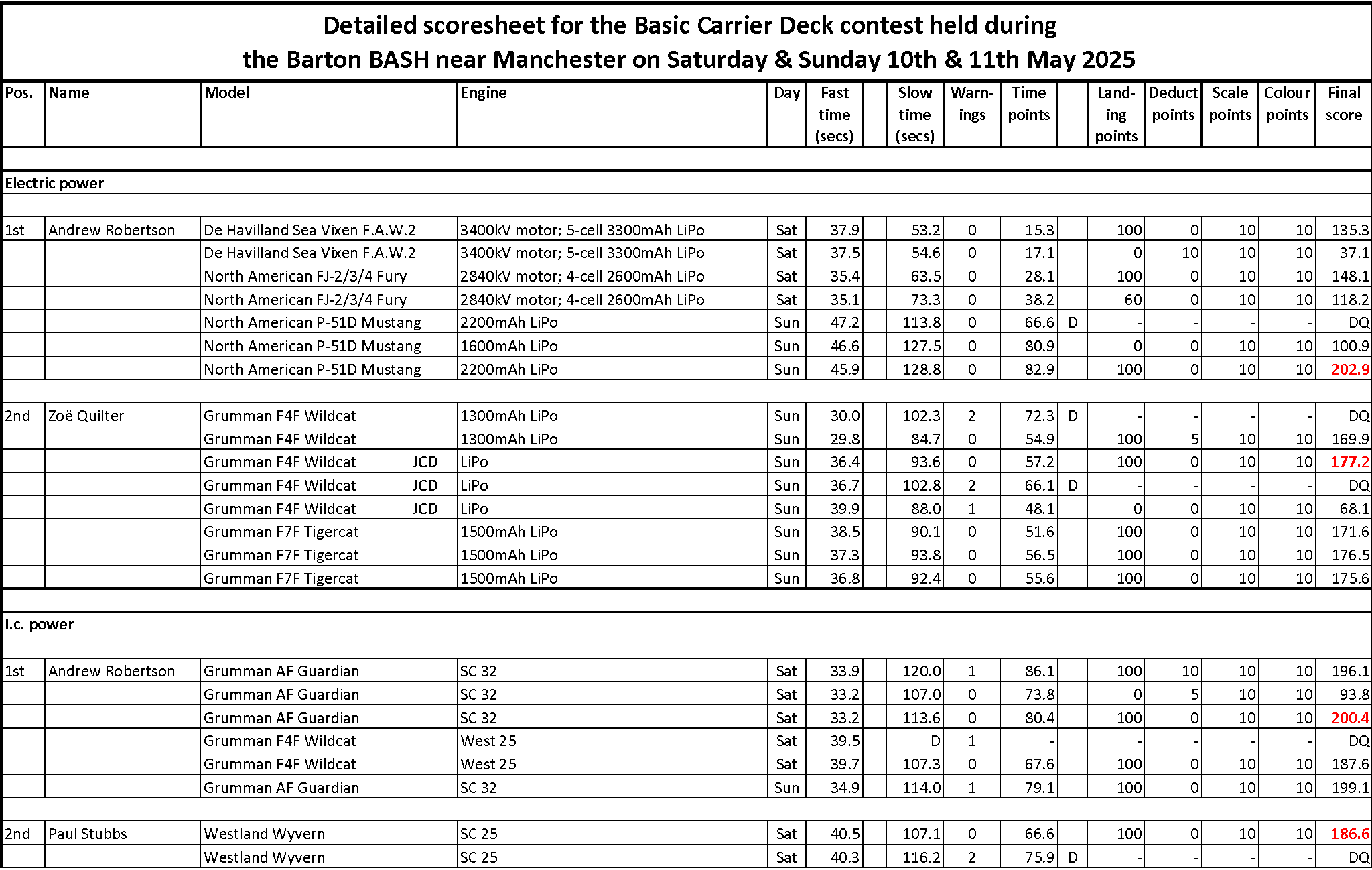


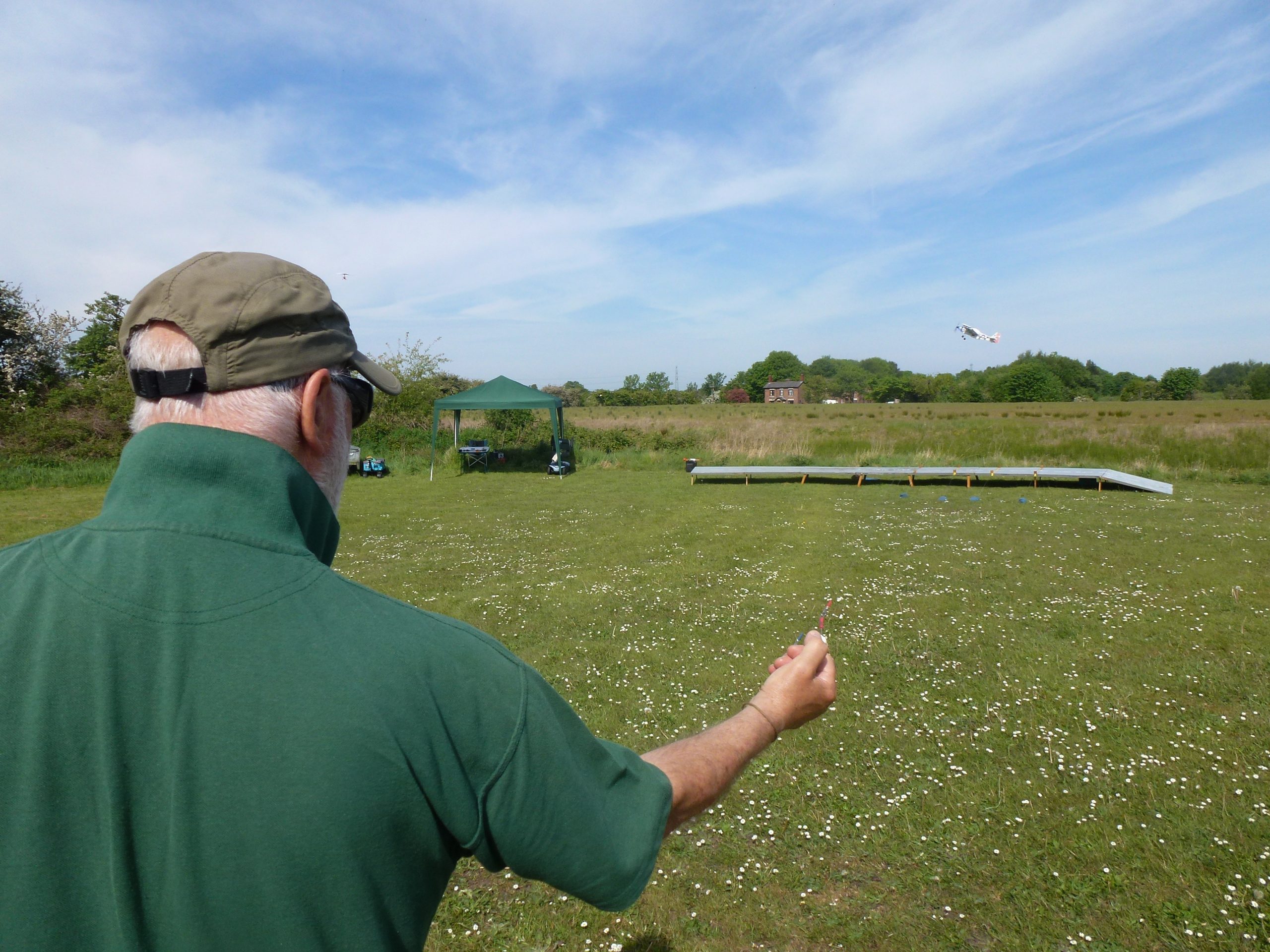
As close to the 30 degree attitude limit as its current trim permits, Andrew Robertson’s electric P-51D Mustang hangs on the up line during the slow run of the flight that got him 202.9 points and 1st place in BCD-e! The model is a converted RC shock flyer constructed from EPP foam and whilst somewhat ‘slabby’ as is inevitably the case with such kits, nevertheless has a surprisingly scale appearance which happily more than conforms to the ‘scale-like’ requirement of the BCD rules.
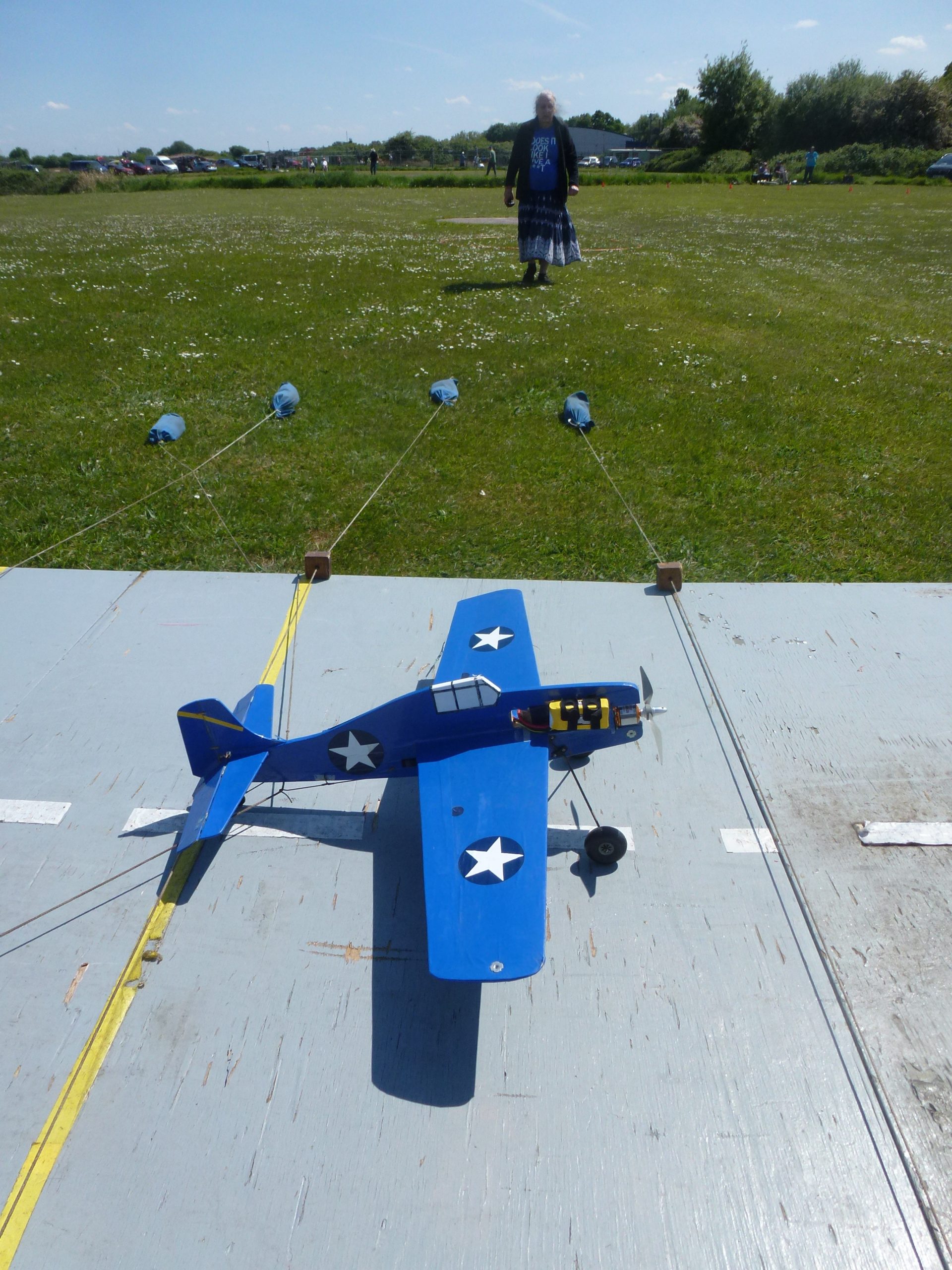
Whilst small and flown on relatively short lines, JCD models can still produce very respectable scores and have on numerous occasions beaten their bigger BCD brothers. Zoe Quilter flew electric Grumman F4F Wildcats in both BCD and JCD forms at the BASH, and actually produced her best BCD-e score for 2nd place with her JCD model – the very model that has, as a drawing and construction article, graced the pages of the August 2022 Aeromodeller (Issue 1023).
P1140970

With concentration clearly evident, Andrew Robertson is seen during the fast run with his SC 32-powered Grumman AF Guardian. The flight’s final score of 200.4 would have been bettered by that of an earlier flight except for its two overshoots – but this flight still got him 1st place in BCD-i.c.!
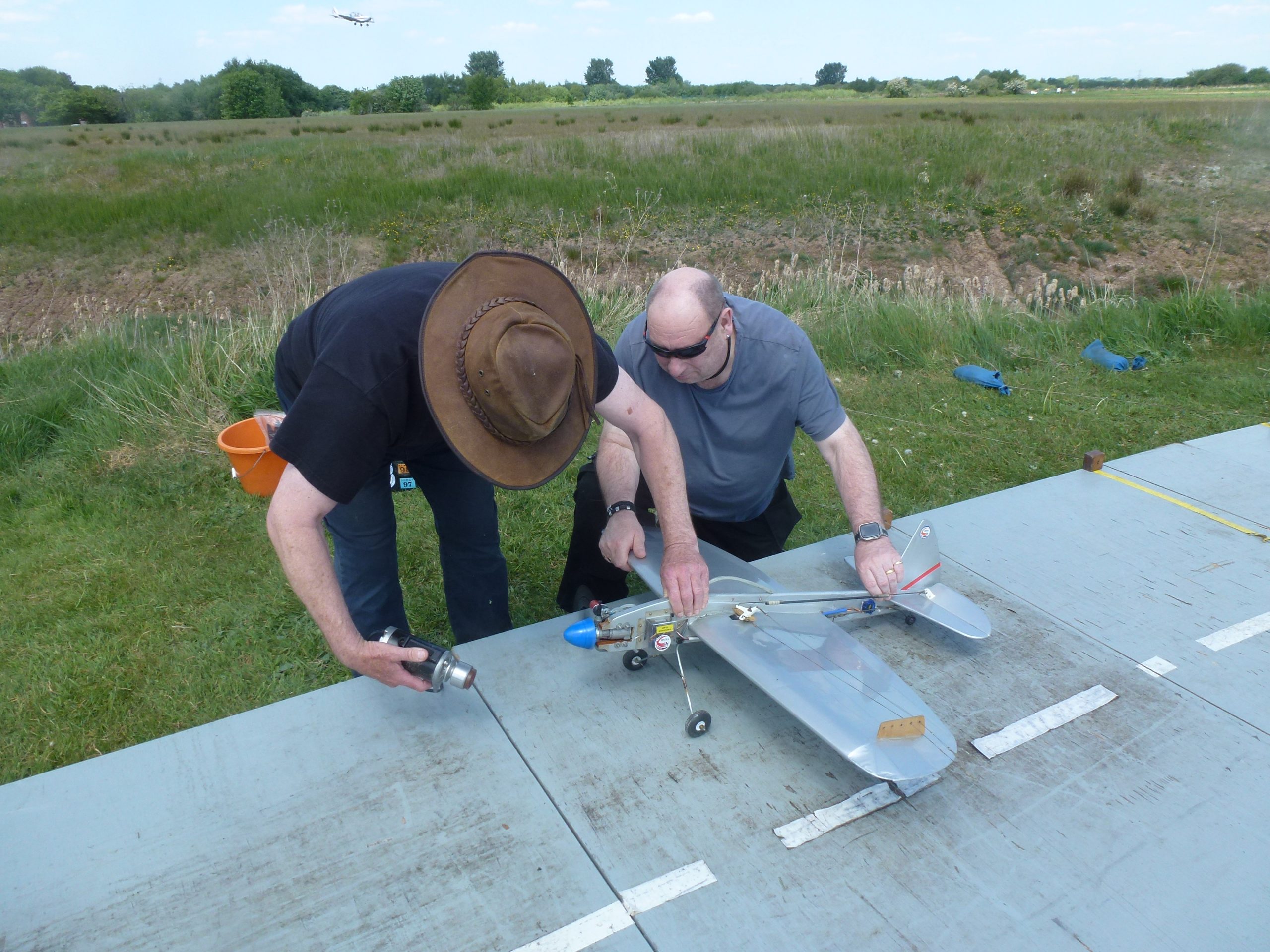
Paul Stubbs starts the SC 25 of his Westland Wyvern, prior to a flight which got him 2nd place in BCD-i.c. Here, he’s helped by Barton clubmate Adrian Dean who was not merely interested in Carrier, but had already built and brought along a model – the Vought A-7 Corsair II designed in the 80s by Carrier maestro Norman Ashford. Although Adrian wisely restricted himself to no more than over-grass test flights whilst at the BASH, he’s said that we’ll be seeing him in competition sometime soon. That’s what we like to hear!
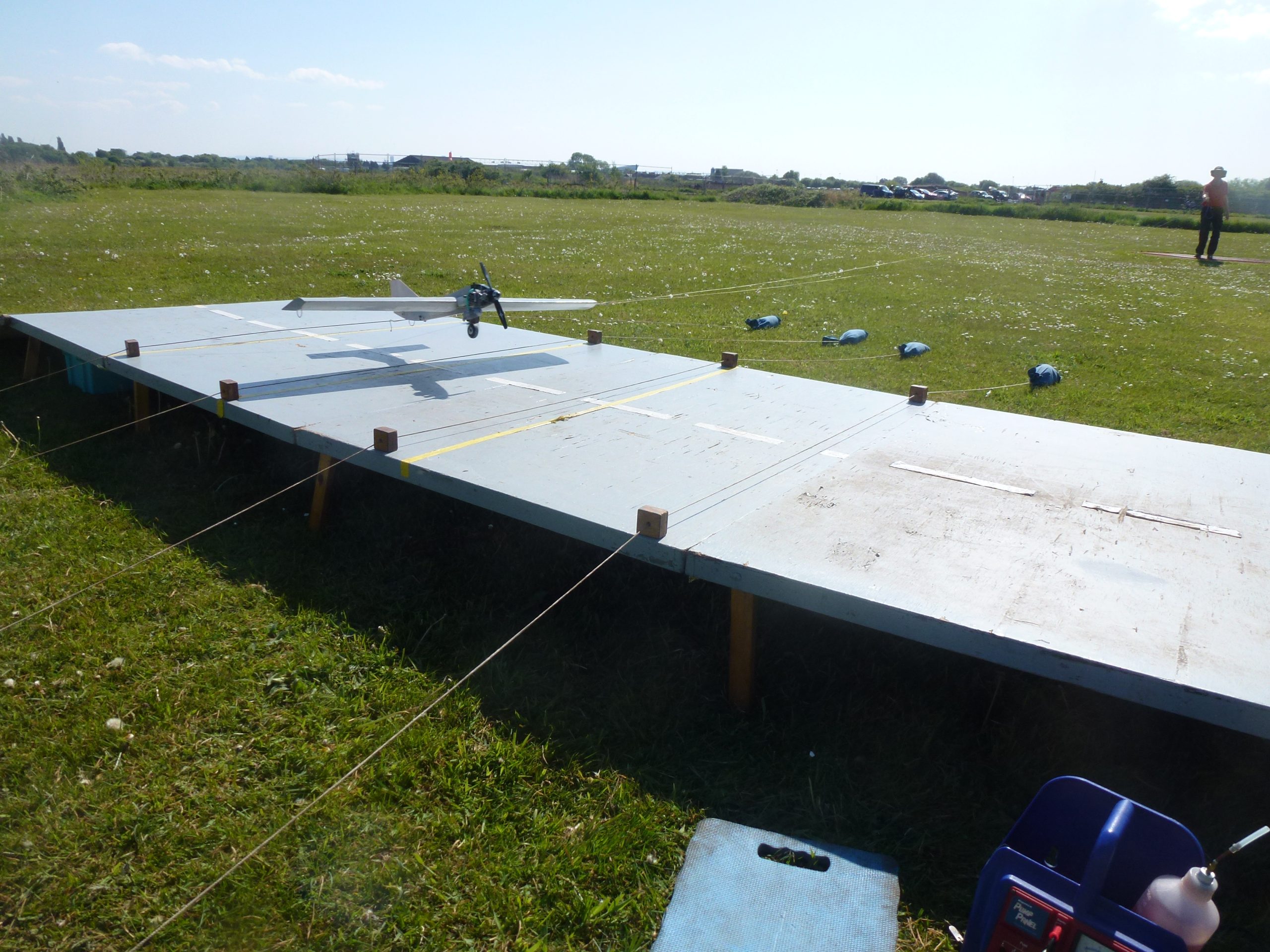
4th place Dave Cowburn with his typical landing approach: fast, flat, low and very accurate! Dave’s SC 32-powered U-2 is seen with the No.1 wire already caught by its hook whilst still airborne. The only work now remaining to be done can safely be left to the arrester bags!
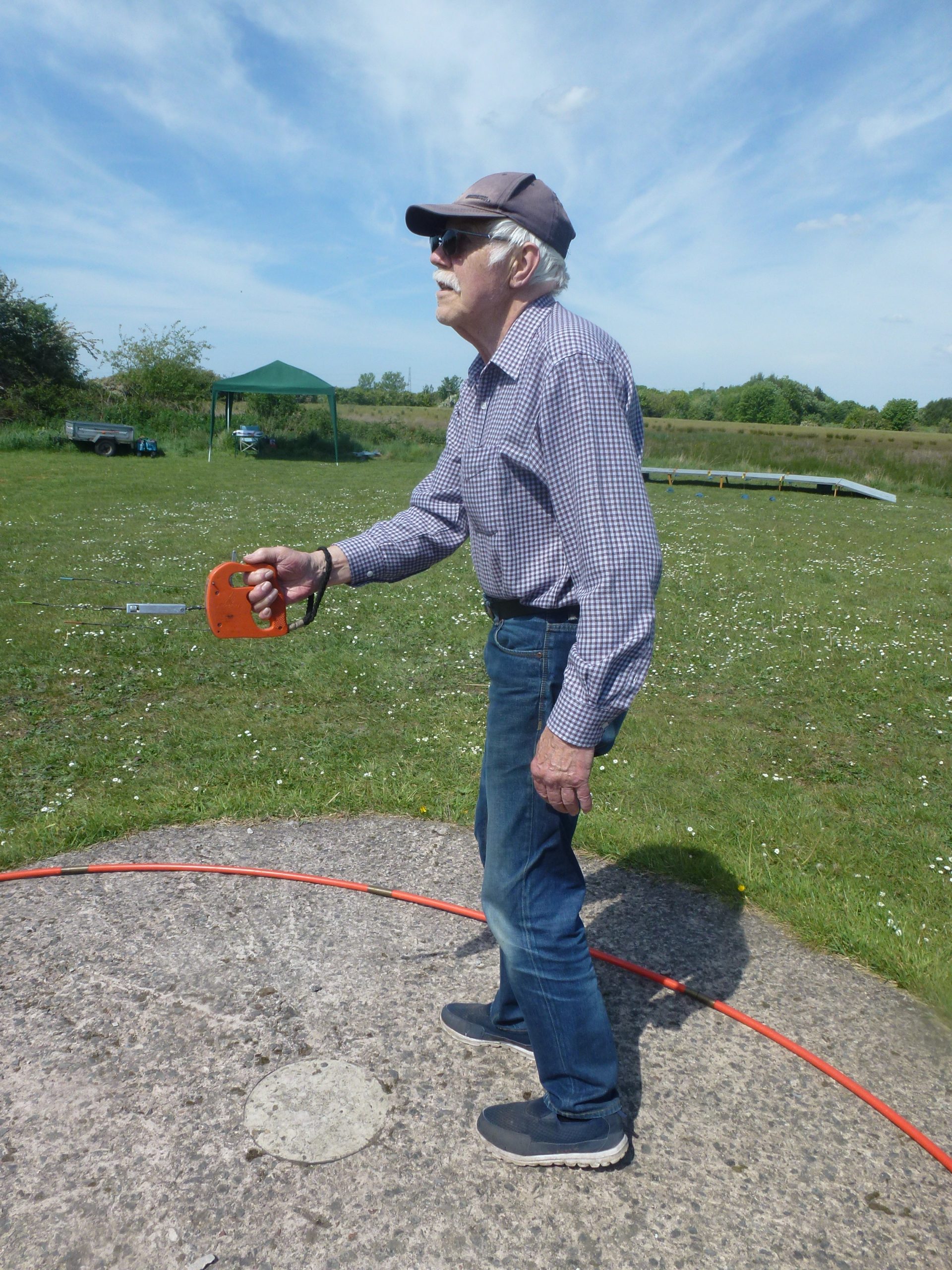
5th place Dave Holmes profiled during a slow run with his OS 40-powered Vought A-7 Corsair II. Dave is over 80 years old, drives hundreds of miles a year to get to Carrier contests and STILL looks amazingly cool in the pilot’s circle. We’ll all have some of that, please!
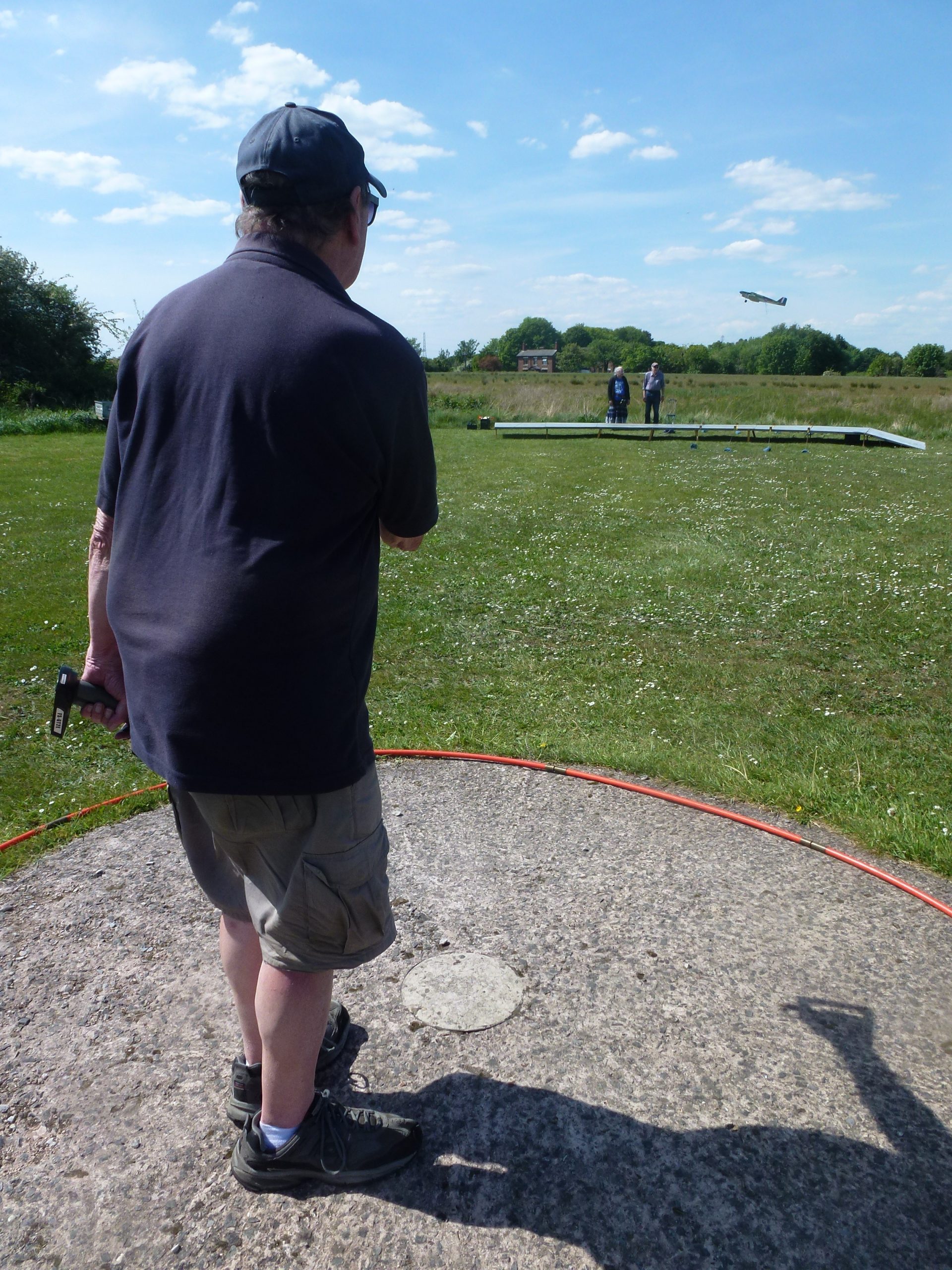
John Marsh and his OS 25-powered Fairey Fulmar had a much more successful day than his 6th place suggested! As a number of other Carrier flyers have done, John re-engined the Fulmar last year from a heavy 40 to this relatively lighter 25. This enabled John to also reduce tank size from 4 to 2 fl.oz and therefore save even more weight. Although fast run times have inevitably increased with the reduction in horsepower, the lighter model can now fly significantly slower. Motor weight reduction has also moved the CG backwards so that on his last flight shown here and for the very first time, John was able to get the model to ‘sit up’ close to the desirable 30 degree attitude limit during slow flight. This resulted in an immediate slow run time gain of nearly 20 seconds, and since his best fast run time had been extended by only 6 seconds, re-engining in this way is an obvious performance improver. And that’s with no other form of trimming such as an even further rearward CG plus a healthy chunk of church roof lead in the outboard tip. Here’s to continuing improvements in the Fulmar’s potential, John!
P1150034 then P1150041 alongside each other (crop some width off P1150034 to achieve this, please)
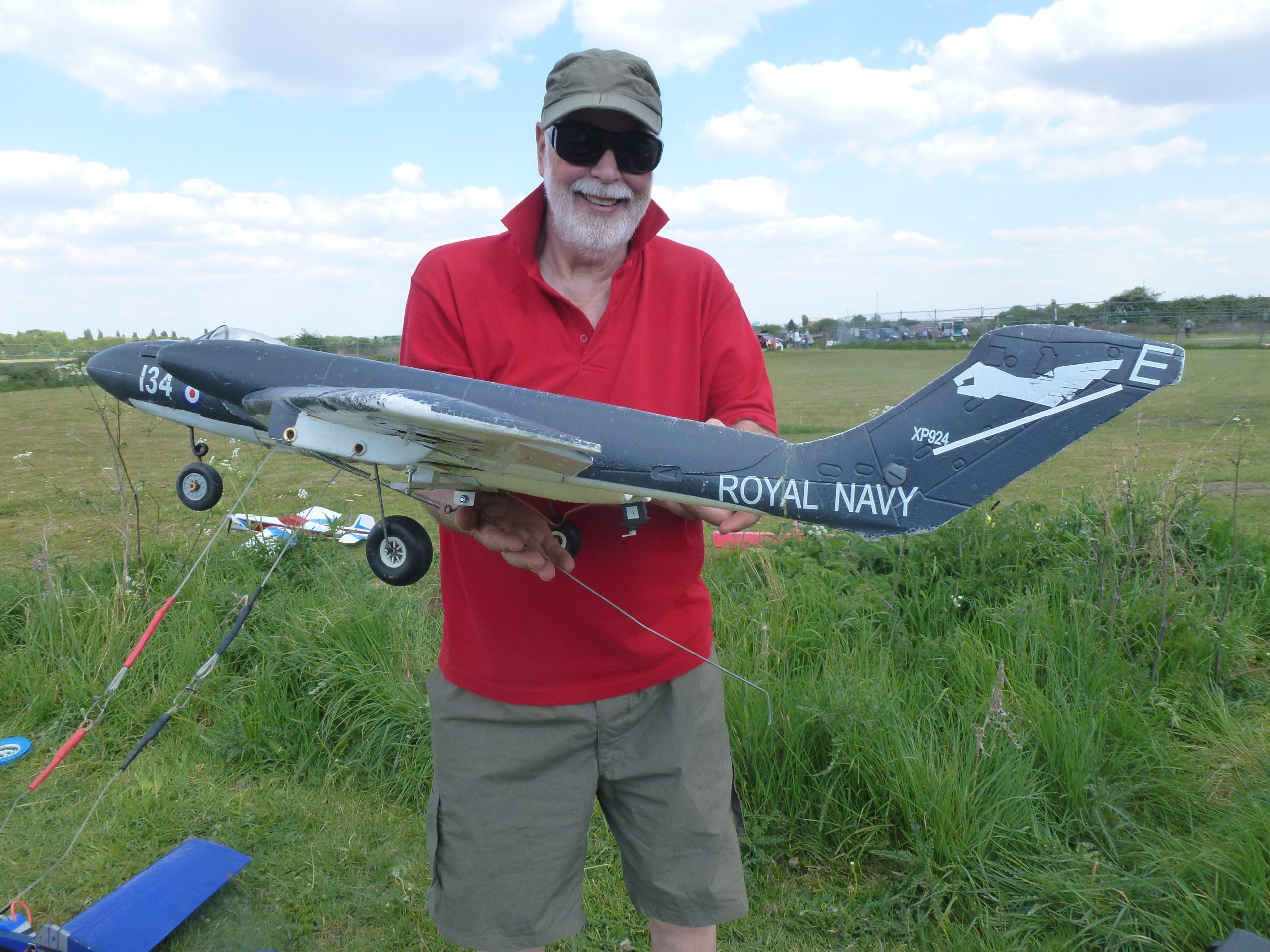
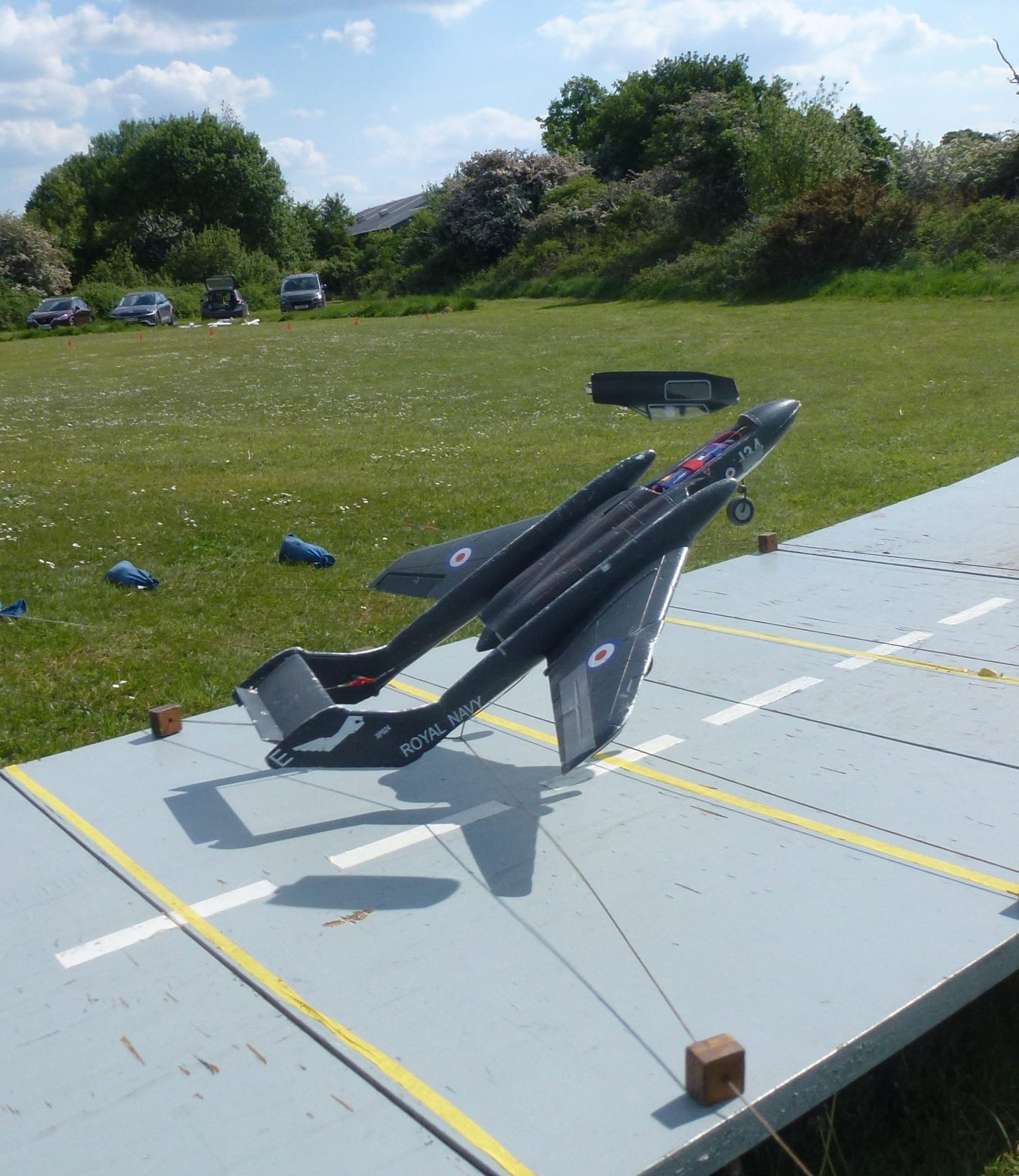
Whack! Although less successful than the first flight, Andrew Robertson and his EDF Sea Vixen FAW2 had a far more spectacular second flight! An unfortunate bout of strong wind necessitated a very fast landing approach where the model had to be slammed onto the deck, shown just after impact in the first photo. The arrival forces were so great that a) if there’d been a model pilot in the cockpit, there would undoubtedly have been a scale ejection to accompany the obvious canopy departure (!), and b) despite a successful hookup on the No.1 arrester wire, the hook jaw was bent so far back that the wire was pulled out! Close inspection of the first photo (just below the inboard tail boom) shows the entire hook shaft bowing under the arresting forces with the bent-back hook jaw just about to let go of the wire! Normal Carrier advice has been, and still is, to construct arrester hooks from 12 gauge wire, as anything thinner will bend significantly under normal hookup forces. The second photo (with the grinning pilot!) provides a clearer shot of the bent hook – and as the Sea Vixen’s wire was 12 gauge, the arresting forces required to cause this can only be imagined…
P1150109
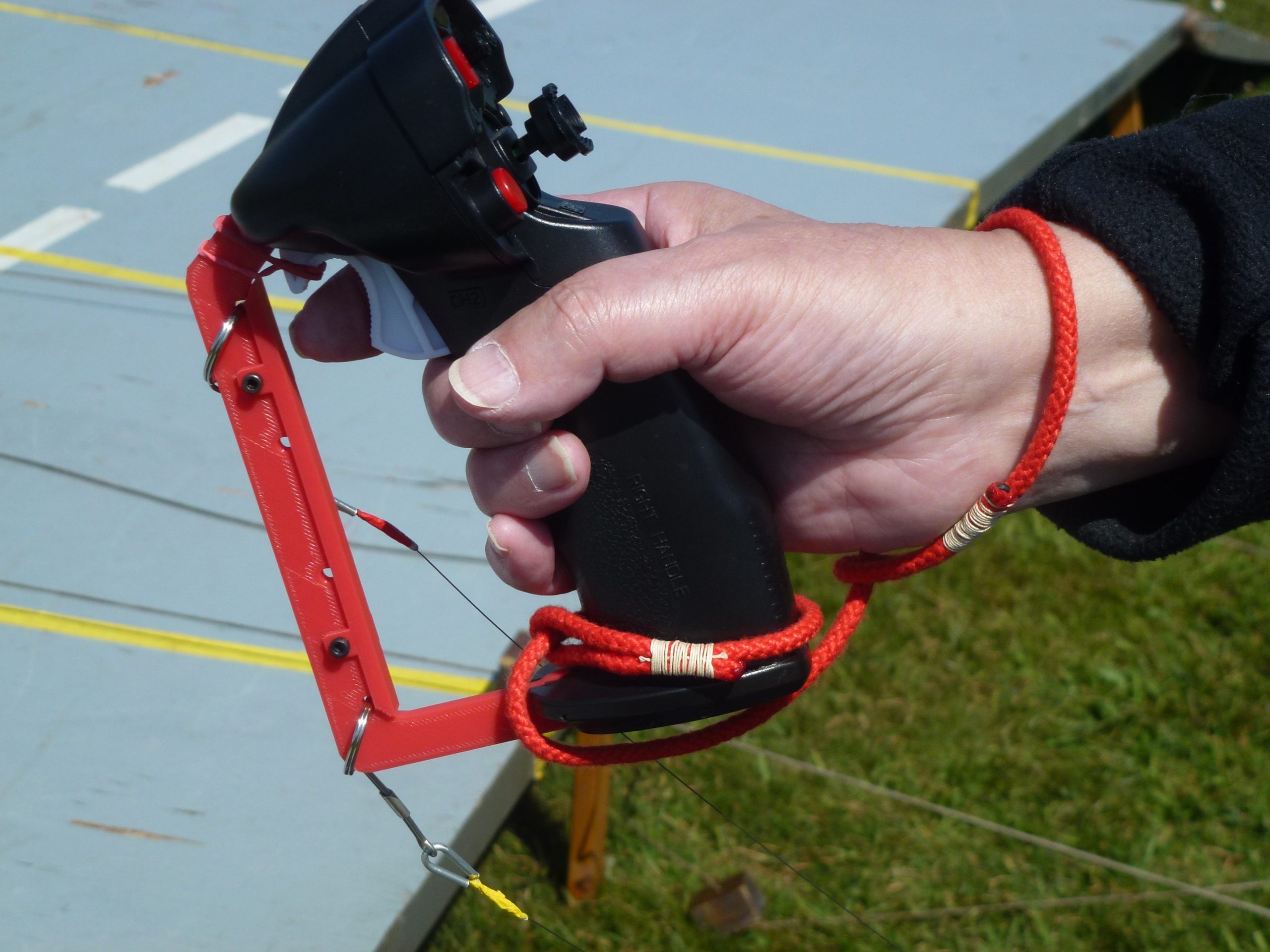
Zoë Quilter’s new Carrier handle (side view).
One of the most innovative and inventive Carrier flyers around today, Zoe displays her control line version of the Hot RC 2.4 GHz 4-channel RC controller originally intended for use with either cars or boats. This handle-shape transmitter is available from various websites (invariably far-eastern) for prices as low as £10 including shipping! As supplied, it’s set up for car control, with backward trigger movement for power and forward movement for braking. The trigger’s ‘centre-off’ position corresponds to ‘no power/no brakes’ and for minimum redesign purposes, Zoe has simply ignored the forward trigger movement and uses only the rear movement to give her throttle control. Her principal modification so far is the 3D printed red bar to which the control wires are attached; the bar is simply extended back into the handle structure and anchored within by longer versions of the screws that join the two halves of the transmitter shell together.

Zoë Quilter’s new Carrier handle (rear view).
The ‘control panel’ is seen on the rear top face of the handle and the compactness of the controls within a device that is very little bigger than a normal control line handle may well make it particularly suitable for the more complex requirements of Class 1 Carrier and possible even control line Scale as well. Excepting the trigger mentioned in the previous caption, Zoe only uses one of the panel controls so far, so the potential for greater control line functionality is considerable. Below is a list of the control functions.
l There is an obvious central left-right joystick: this provides steering when in either car or boat mode.
l To the right of the joystick are two small black buttons on a diagonal line, each of which acts like a toggle switch. One press of either button will trigger a full deflection of the associated servo and a second press will return the servo arm to its starting position. Zoë uses the lower left button to deploy the arrester hook.
l Above the two black buttons and arranged horizontally are the trim controls for the buttons. The trims vary the end position of the servo arms controlled by the buttons.
l To the left of the button trim controls is a wedge-shaped vertical red button. This switches the entire transmitter between car and boat modes, the principal effect being that the trigger-braking function is disabled.
l To the left of the red mode button are the combined trim controls for the throttle trigger and the joystick.
l Finally, the big red button below the trigger/joystick trim controls is a reversing switch which reverses some of the transmitter’s functions.
